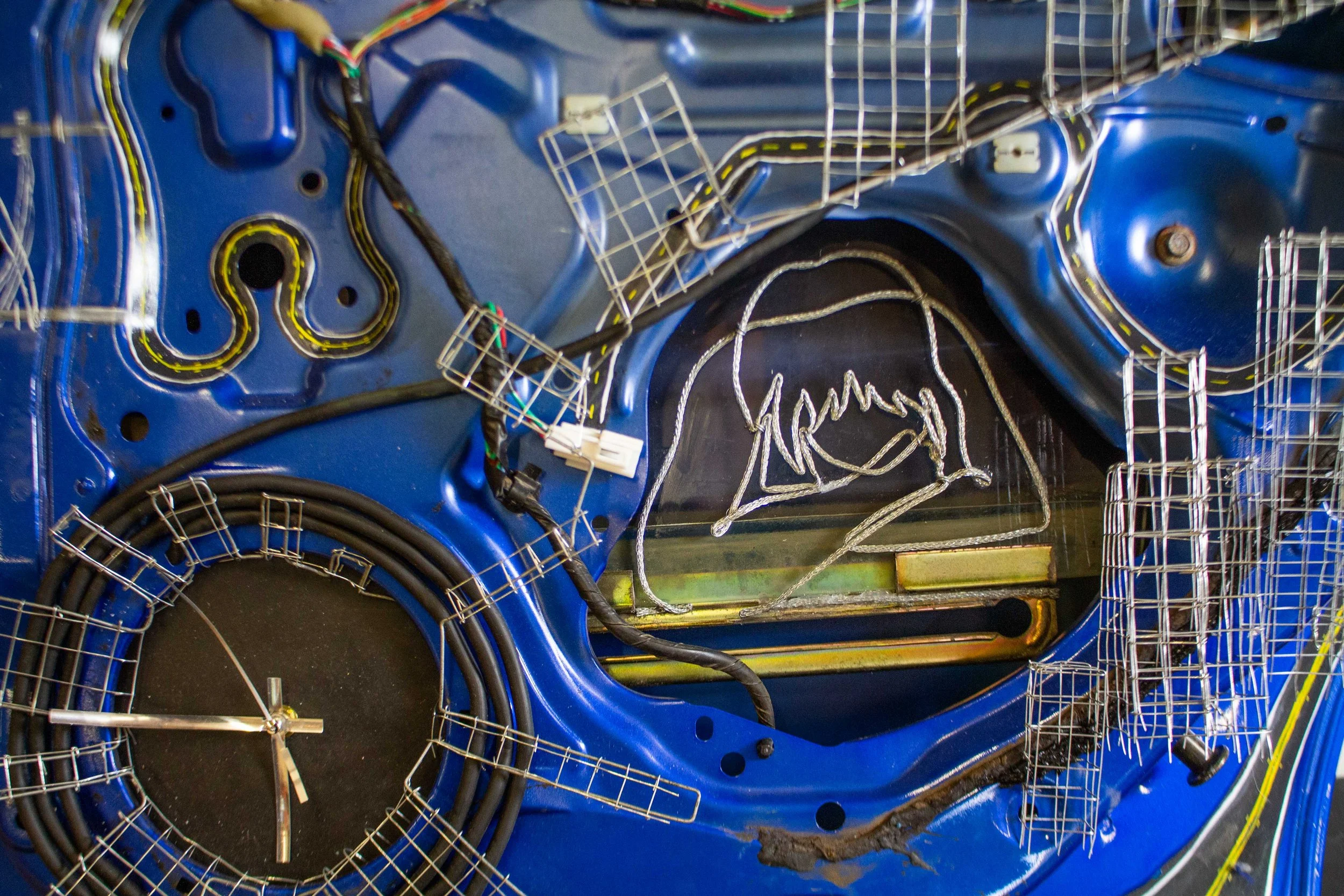






Progression
Sourced car door, stained glass, oil painting, wire sculpture
Unit 4 Art Making and Exhibiting
This installation, titled Progression transforms an ordinary car door into a dialogue between nature and industry. Exploring the relationship between natural beauty and man-made industrial development. The subject matter juxtaposes a radiant stained-glass sunset with the mechanical form of a stripped-back car door. White linework overlays the metal surface, depicting grids, powerlines, and urban structures. This combination reflects Avery’s interest in the ways-built environments often frame or obstruct natures authentic beauty.
The style of the work merges craft-based traditions with industrial aesthetics. The stained-glass panel draws from Louis Comfort Tiffany’s celebration of organic forms and luminous colour, creating a spiritual connection to the natural world. In contrast, geometric drawings reference Jeffrey Smart’s precision and focus on urban order, highlighting human intervention in landscapes. The fusion of these influences allowed me to construct a dialogue between fragility and permanence, beauty and harsh cold industrialisation.
The aesthetic qualities are defined by contrast. warm yellows and oranges in the sunset glow against the cool, mechanical blue of the car door. Transparent, delicate glass is set within heavy, opaque metal; curved organic forms oppose strict geometric grids. Avery messily installed this stained-glass window within the car door frames using a thick black silicone. Mimicking the messy greasy oil build up that can be found vicariously on the car door body. Emphasising the dark, greasy impure nature of modern development. These qualities reinforce the tension between the natural and the man-made, while also creating moments of harmony within their juxtaposition.
The oprocess involved dismantling and preparing a reclaimed car door as the base material. She replaced the original glass window with a hand-cut stained-glass panel, carefully soldered to create the sunrise motif. Over several stages, she experimented with compositions of industrial forms, trialling schematic line drawings on paper before transferring them with oil paints and silicone onto the door’s surface. She used wire to sculpt 3D buildings as well as a wire visual of an individual bent over, head in arms, depicted in dismay or contemplation of her current situation. Incorporating the use of a mirror in the separate widow, further evokes the idea of hope and that the future is a reflection of what we make it. The mirror directly enforces figurative and literal reflection and moment for pause. Through this process, I was able to balance spontaneity with precision, ensuring that natural and mechanical elements remained in visual dialogue, whilst perpetuating her desire to purposefully confront viewers with our contemporary fiction, but paired with the reminder of hope and renewal.
Her artistic choices highlight the symbolic nature of materials: the car door, a product of mass-production and mobility, becomes a canvas for reflection. The stained glass elevates a pragmatic object into one that evokes beauty and spirituality, suggesting that even within spaces dominated by industry, fragments of the natural world persist.
